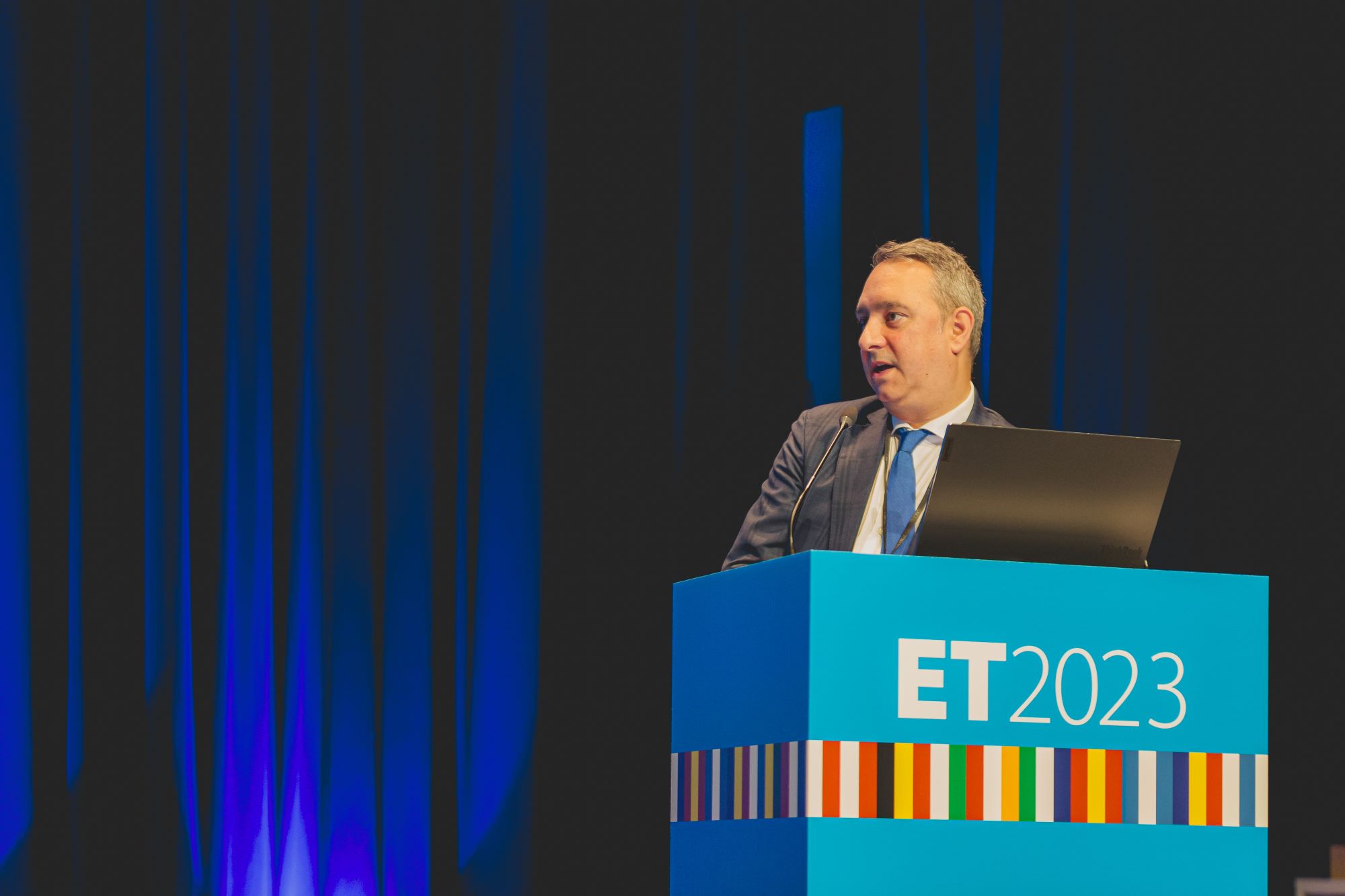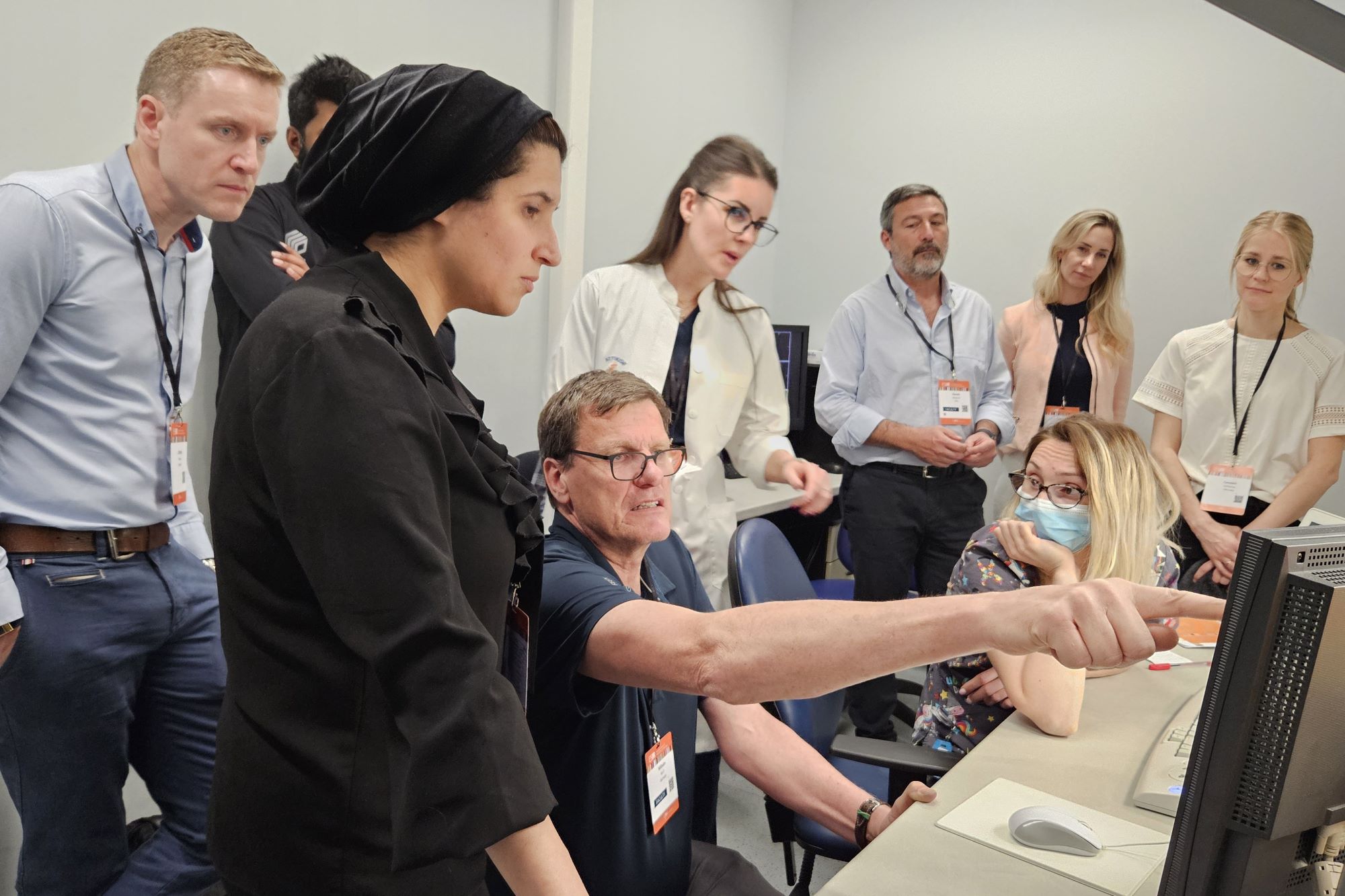CIRSE: What do you hope participants take away from this course, and how do you envision it impacting their clinical practice?
Spiliopoulos: This course aims to equip participants with the latest advancements in maintaining dialysis vascular access, providing the tools to implement evidence-based practices and optimize patient care. Participants will learn to recognize the importance of personalized surveillance and endovascular treatment services within their hospitals, accurately identify indications for timely interventions, and select the most appropriate devices for diverse clinical scenarios. Additionally, the course will focus on the effective management of procedure-related complications and identifying critical knowledge gaps that warrant further research, ultimately empowering participants to enhance outcomes and elevate standards in dialysis vascular access management.
The Importance of Vascular Access in HD
CIRSE: Why is maintaining the functionality of vascular access crucial for haemodialysis patients? Could you elaborate on its role in patient outcomes and overall quality of life?
Spiliopoulos: A functional dialysis vascular access (DVA), whether an arteriovenous fistula (AVF) or an arteriovenous graft, is essential for haemodialysis (HD) patients with end-stage kidney disease (ESKD). Often referred to as the “lifeline” of HD patients, the DVA significantly impacts their survival and quality of life. Complications such as stenosis, which eventually leads to dysfunction or thrombosis, are critical events that necessitate immediate intervention and can compromise the long-term outcomes and viability of the DVA. Moreover, the use of haemodialysis central venous catheters is correlated with significantly worse long-term outcomes in terms of morbidity and mortality, therefore maintaining a functional DVA is essential.
CIRSE: What do you see as the most significant advancements in the management of vascular access over the past decade?
Spiliopoulos: Over the past decade, minimally invasive endovascular techniques have become the primary approach for managing failing and failed DVA. This shift is largely attributed to growing procedural experience and continuous technological advancements in endovascular devices. These innovations have significantly improved outcomes and expanded indications for percutaneous treatment. High-pressure DVA-specific balloons and stent grafts, thrombectomy devices, and devices enabling the percutaneous—nonsurgical—creation of an AVF (pAVF) are important examples.
Current challenges
CIRSE: What are the most common complications associated with arteriovenous fistulas (AVF) and grafts (AVG), and why do these challenges persist despite advancements in treatment?
Spiliopoulos: Stenosis is the most common complication associated with DVA, accounting for nearly 80% of both early and late failures, and can be triggered by several factors:
- Increased blood flow and hemodynamic shear stress
- Vascular injury
- Uremia
- Iatrogenic- Haemodialysis catheter-related central venous stenosis
Despite advancements in minimally invasive treatments, restenosis persists due to the limitations of current therapies and the aggressive nature of renal disease, requiring repeated interventions.
CIRSE: How does circuit stenosis impact the longevity of vascular access, and what strategies have proven most effective in addressing this issue?
Spiliopoulos: Stenosis poses significant challenges throughout the lifespan of vascular access, contributing to issues like maturation failure, haemodialysis dysfunction, and complications such as arm oedema. The 2018 European Society for Vascular Surgery guidelines recommend regular duplex ultrasound (DUS) surveillance and pre-emptive angioplasty for significant stenosis to reduce thrombosis risk, a strategy supported by Level I evidence. Tailored surveillance and timely endovascular treatments, combined with advancements like drug-coated balloons and covered stents, can improve outcomes, reduce restenosis, and extend vascular access longevity.
CIRSE: What are the critical gaps in our understanding or clinical practice regarding the management of failing or failed vascular access?
Spiliopoulos: Despite significant advancements, DVA dysfunction remains the major cause of morbidity and mortality of haemodialysis patients, accounting for the most frequent reason for hospitalization. This affects not only the patient’s quality of life but also represents a major financial burden to health systems.
It seems that the reason for this is multifactorial, including the lack of precise understanding of the disease’s pathophysiology and insufficient data to determine optimal surveillance strategies and treatment algorithms. Another factor complicating the equation is the absence of unrestricted access to high-level care and inadequate training, encompassing advanced imaging, clinical, and endovascular skills. All the above are essential for effective DVA maintenance and salvage.
Insights on the ESIR course
CIRSE: This course offers theoretical and hands-on training. How do you envision this blend of learning will benefit participants, especially in improving patient care?
Spiliopoulos: Theoretical training is crucial for comprehending the foundations of established clinical practices, introducing innovative yet lesser-known techniques, and identifying the areas that require further research. Hands-on training will provide the opportunity to familiarize oneself with a diverse range of percutaneous and endovascular techniques and devices, emphasizing correct application and offering practical tips to enhance patient care. Moreover, discussion on how to manage complications, and a presentation of complex clinical scenarios will offer insights into clinical, diagnostic, and treatment challenges.
CIRSE: Could you describe the importance of emerging technologies such as IVUS-guided procedures or drug-eluting devices in vascular access interventions? How do they compare to traditional methods?
Prof. Spiliopoulos: A major limitation of endovascular treatment is the risk of early reintervention. Two key factors influencing reintervention rates are the immediate postintervention technical outcomes (i.e. acute luminal gain) and restenosis rates. Emerging technologies, such as IVUS-guided procedures and our department’s innovative DUS-guided procedures strategy, provide critical real-time, quantitative, and qualitative data to optimize acute luminal gain and enhance immediate technical outcomes.
Regarding restenosis, the hostile endovascular environment of ESRD and chronic high blood volume exposure create an aggressive hyperplastic response within the vascular circuit. Drug-eluting devices aim to mitigate this hyperplastic reaction and reduce restenosis. Level I evidence supports the use of specific drug-eluting technologies (not all of them!) in improving DVA outcomes, and ongoing research is exploring the potential of novel drug-eluting balloons.
CIRSE: How do you plan to integrate the lessons on minimally invasive techniques like Endo AVF into everyday clinical practice?
Spiliopoulos: EndoAVF has recently emerged as a valuable addition to clinical practice and is the result of extensive research over the past decade. EndoAVF can create a dialysis access in locations that may not be accessible through traditional surgical methods, offering an additional site for access creation to be added to our armamentarium. This could be also particularly beneficial for patients who have exhausted other options or have specific anatomical limitations.
This minimally invasive approach offers several advantages over traditional surgical AVF creation, including smaller incisions, reduced pain, faster recovery times, and less procedural trauma and complications, which can positively impact maturation rates. Furthermore, endoAVF often results in a more aesthetically pleasing outcome, minimizing aneurysmal deformation. The course will feature demonstrations of all available endoAVF technologies and provide hands-on training using simulation models.
Broader perspective on guidelines and global trends
CIRSE: The KDOQI and ESVS guidelines emphasize percutaneous and endovascular treatments. How widely are these guidelines being adopted globally, and where do you see room for improvement in implementation?
Spiliopoulos: While the KDOQI and ESVS guidelines have significantly influenced the management of dialysis vascular access, their global adoption varies according to several factors such as healthcare infrastructure, resource availability, and physician training levels, among others. However, percutaneous high-pressure balloon angioplasty is now the established standard of care for dysfunctional DVA, and percutaneous declotting procedures are increasingly common. This approach is supported by all international guidelines and has been shown to improve patient outcomes. Overcoming barriers to guideline implementation, such as lack of awareness, insufficient training, and resource constraints, is crucial to ensure optimal vascular access care worldwide.
CIRSE: With kidney replacement therapy expected to rise worldwide, how do you see the role of vascular access management evolving in different healthcare settings, particularly in low-resource environments?
Spiliopoulos: The increasing global burden of ESRD necessitates effective vascular access management. In high-resource settings, the focus is shifting towards advanced techniques, novel devices, and personalized medicine to optimize long-term access preservation. In low-resource settings, challenges such as infrastructure constraints, limited resources, and inadequate training hinder optimal care. Addressing these challenges requires a multi-faceted approach, including training, education, collaboration, and policy advocacy. By implementing these strategies, we can improve vascular access care and enhance the quality of life for patients worldwide.
Future Directions and Research
CIRSE: What areas of research in vascular access management do you believe require immediate attention, and how could these advancements change current practices?
Spiliopoulos: Personalized Tailored surveillance strategies are essential for optimizing DVA maintenance and determining the optimal timing of interventions. I advocate for incorporating individualized pre-emptive angioplasty into all standard practice guidelines. Novel functional endpoints, such as DUS-calculated volume-flow measurements, are also needed and can enhance angioplasty outcomes. Additionally, technologies like IVUS and drug-eluting devices (including stents) and stent grafts, hold significant promise for improving patency and warrant further investigation. Finally, well-designed, prospective trials, comparing long-term outcomes of salvage endovascular versus surgical declotting procedures for thrombosed DVAs are required.
CIRSE: Are there any promising new devices or techniques on the horizon that you’re particularly excited about? How might these innovations shape the field over the next decade?
Spiliopoulos: While I’ve been intrigued by advancements in devices like sirolimus-eluting balloons, dialysis-specific stent grafts and ultra-high-pressure balloons, the most transformative technique in my practice has been the use of intraprocedural volume-flow measurements. Traditional angiographic endpoints, such as less than 30% residual stenosis, and clinical endpoints, like restoring a palpable thrill, are insufficient for accurately assessing immediate procedural outcomes. Functional data, specifically volume-flow measurements, offer a quantifiable way to evaluate results and predict potential clinical recurrence. Our recent publication in Radiology, the VOLA II study, highlights the importance of achieving a post-procedural volume flow (VF) greater than 720 ml/min for forearm AVFs and 1120 ml/min for upper arm AVFs as immediate treatment goals.


